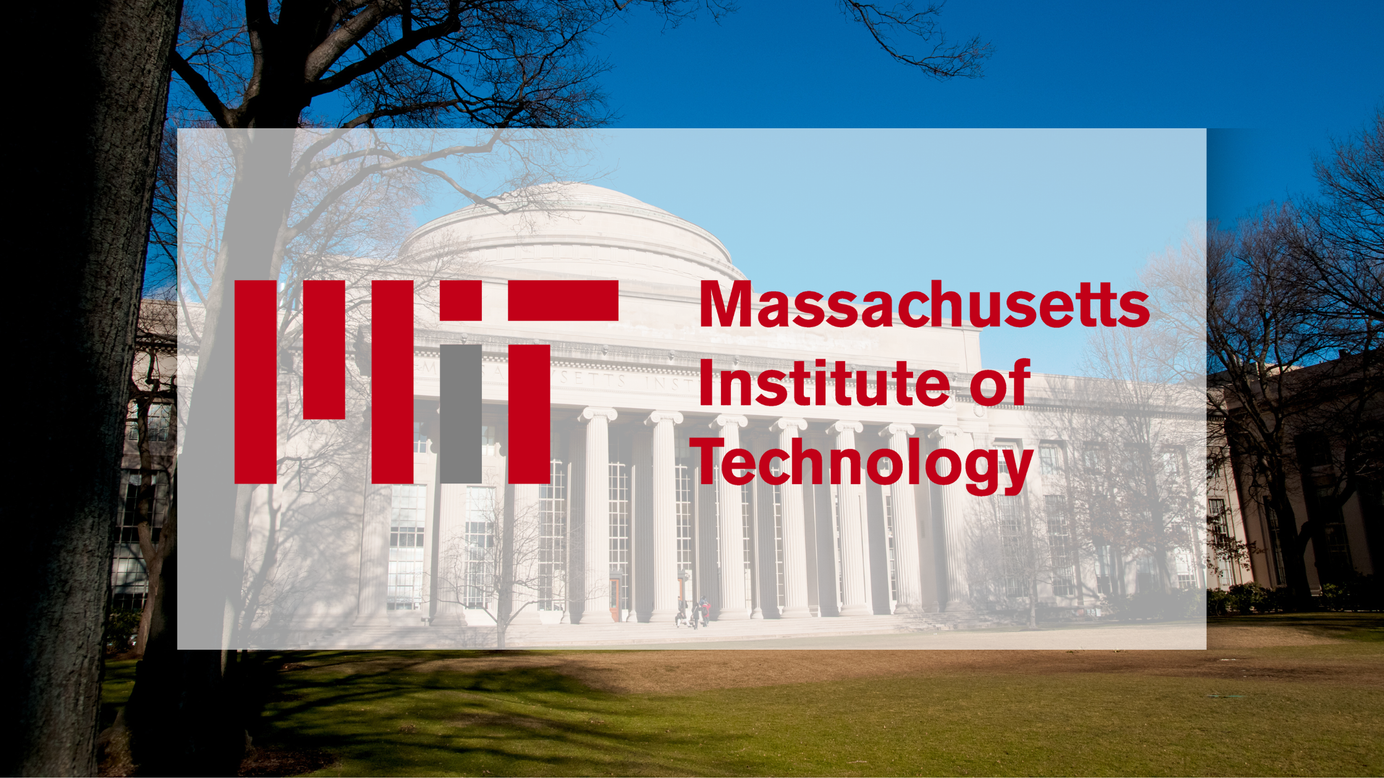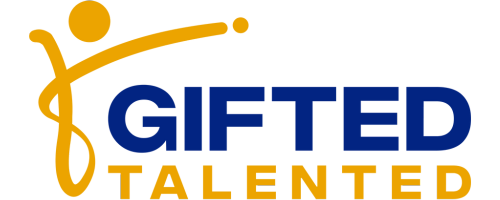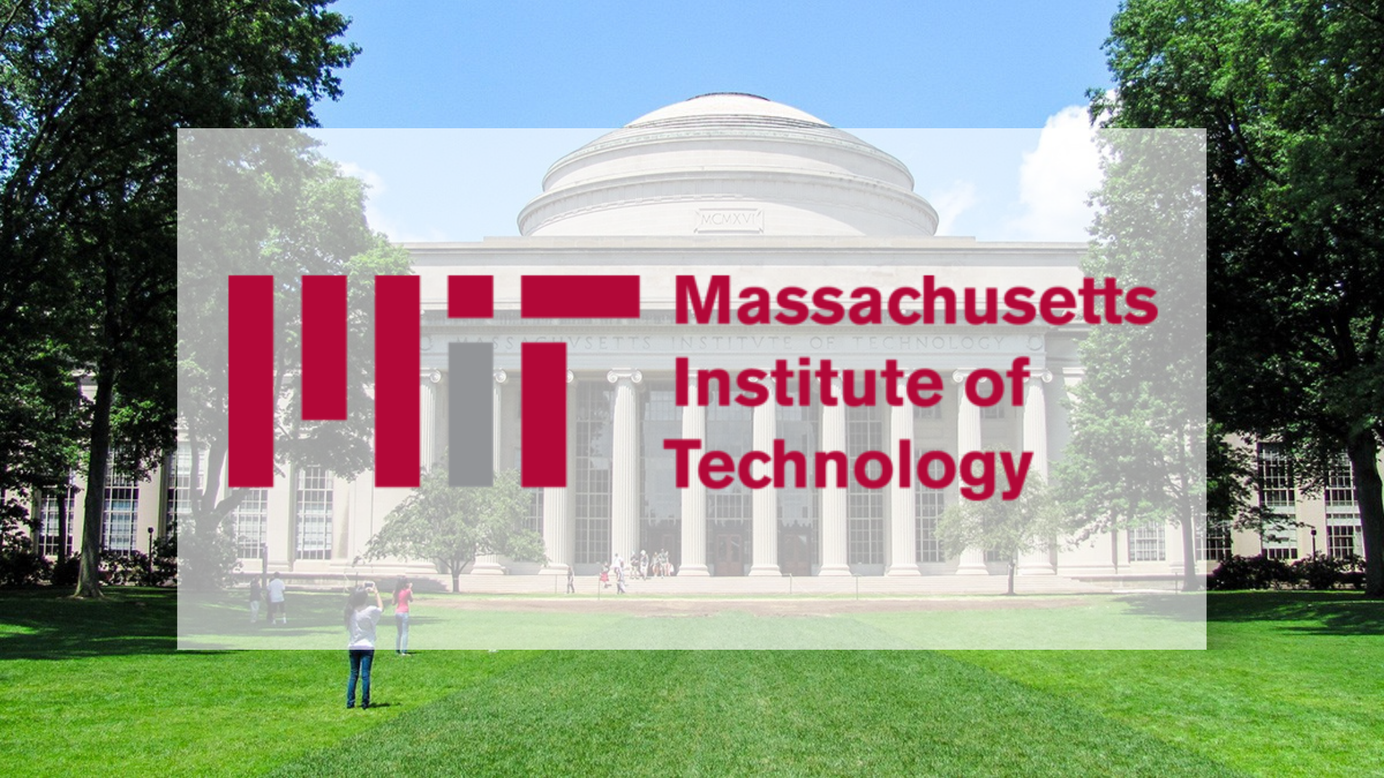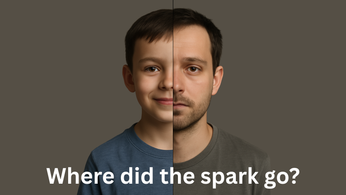
19 FREE & Prestigious Research Programs for High School Students
A curated guide to 19 free, prestigious research mentorships for high school students—featuring MIT, Stanford, Columbia, NIH, and more.
[High School 🎓] • [Intelligence 🧠] • [Nurture 🌱] • [Insights 📊]
For parents of gifted teens, finding meaningful, real-world research opportunities can feel daunting, especially when factoring in cost and accessibility. That’s why we’ve compiled this curated list of the most prestigious, free (or fully-funded) research mentorship programs designed specifically for high school students.
🗓️ Last Updated: May 2025
These selective programs offer university mentorship and real research experience (often with the chance to publish, present, or build a college-ready portfolio) all at no cost. Many alumni of these programs go on to top-tier colleges and lifelong careers in STEM, humanities, and beyond.
Below is a quick-reference chart to help you explore your options based on location, cost, eligibility, virtual options, and focus areas.
🔍 Quick Comparison: Explore 19 Free Research Programs
Use this table to compare by location, eligibility, cost, virtual access, and key focus areas. All are exceptional. Just find the one that fits your student best.
Note: Programs are listed in rough order of selectivity and prestige, but all are excellent and worth exploring.
| Program | Location | Dates | Grade Level | Cost | Virtual | Key Fields |
|---|---|---|---|---|---|---|
| MIT RSI | MA | June–Aug | 11 | Free + stipend | No | STEM, Research Paper |
| Stanford SIMR | CA | June–July | 11–12 | Free (need-based) | No | Biomed, Genomics |
| Rockefeller SSRP | NY | June–Aug | 12 (NYC) | Free + $2,000 | No | Biomed, Neuro |
| Harvard-Smithsonian SRMP | MA | Sept–May | 11–12 (Boston) | Free + stipend | Hybrid | Astrophysics |
| NYU ARISE | NY | July–Aug | 10–11 (NYC) | Free + $750 | No | CS, Engineering |
| Columbia BRAINYAC | NY | Feb–Aug | 10–11 (NYC) | Free + $1,250 | Hybrid | Neuro, Genetics |
| Simons SRP | NY | June–Aug | 11 | Free + stipend | No | STEM, Research |
| Stanford STaRS | CA | June–Aug | 11–12 (Bay Area) | Free + stipend | No | Women's Health |
| UCSD MAP | CA | Oct–May | 10–12 (San Diego) | Free | No | Bio, Env Sci |
| Clark at Texas Tech | TX | June–July | 11–12 | Free + $750 | No | STEM |
| UChicago Mentorship | Virtual | June–Aug | 10–12 | Free | Yes | Data Sci |
| UIUC YSSSRP | IL | June–Aug | 10–12 (Midwest) | Free + stipend | Hybrid | Bio, Eng |
| Princeton LLP | NJ | June–Aug | 11–12 | Free | Some | STEM |
| CUNY RISE | NY | Summer + AY | 11–12 | Free + stipend | Yes | Bio, Equity |
| NIH SIP | DC/Multiple | June–Aug | 12 (18+) | Free + stipend | No | Med, Bio |
| MIT PRIMES | MA + Remote | Feb–May | 11 | Free | Yes (PRIMES-USA) | Math, CS |
| AMNH SRMP | NY | Sept–May | 11–12 (NYC) | Free + stipend | Some | Earth Sci |
| QuarkNet Chicago | IL | June–Aug | 10–12 | Free + stipend | No | Physics |
| Stanford Mentorships | CA | Varies | Varies | Free | Hybrid | Med, Chem, Genomics |
Below, we’ve organized each program by prestige, selectiveness, and accessibility. Each entry includes parent-friendly highlights: who it's for, how it works, and what your child can expect to gain. Let this guide serve as a launchpad for your family’s next big academic adventure.
1. MIT Research Science Institute (RSI)
Affiliation: Massachusetts Institute of Technology (MIT)
Location: Cambridge, Massachusetts
Program Dates: June 22 – August 2
Application Deadline: December 11, 2025
Eligibility: U.S. high school juniors (11th graders)
Cost: Completely free; travel and housing covered, with stipend included
Why It Stands Out:
RSI is often regarded as the most prestigious research opportunity available to high school students. With an acceptance rate of ~3% (around 80 students from 3,000+ applicants), RSI combines rigorous academic coursework with cutting-edge research under top MIT scientists. Students spend the first week in college-level seminars across STEM fields, followed by five weeks of mentored research. The program concludes with a formal presentation and final paper. RSI alumni often go on to top-tier universities and competitive research careers.
Research Areas:
- Biology, Chemistry, Physics
- Mathematics, Engineering
- Computer Science, Medicine
- Environmental & Social Sciences
2. Stanford Institutes of Medicine Summer Research Program (SIMR)
Affiliation: Stanford University
Location: Stanford, California
Program Dates: June 9 – July 31
Application Deadline: February 22, 2025
Eligibility: U.S. high school juniors and seniors, age 16+
Cost: Free; needs-based stipend up to $2,500 (housing and transportation not included)
Why It Stands Out:
SIMR is one of the most prestigious and selective biomedical research programs in the country, admitting only 50 students annually. Participants work full-time in Stanford laboratories under the mentorship of graduate students, postdoctoral fellows, and faculty members, gaining firsthand experience in cutting-edge research. In addition to lab work, students attend daily seminars and develop a scientific research poster to present at the program’s conclusion. While students from across the U.S. are eligible to apply, local Bay Area applicants may receive preference due to specific funding sources.
Research Areas Include:
- Stem Cell & Regenerative Medicine
- Genetics & Genomics
- Cancer Biology
- Cardiovascular Biology
- Neurobiology
- Immunology
- Bioengineering
- Bioinformatics
3. Rockefeller University Summer Science Research Program (SSRP)
Affiliation: Rockefeller University
Location: New York City, New York
Program Dates: June – August (7 weeks)
Application Deadline: Early February 2025
Eligibility: NYC-based rising seniors (current juniors), 16+
Cost: Free; $2,000 stipend included
Why It Stands Out:
Hosted by one of the world’s leading biomedical research institutions, the Rockefeller SSRP is exceptionally selective, accepting fewer than 20 students each year. Participants are paired with leading scientists in fields such as neuroscience or molecular biology and join real research labs. Students present findings at a formal symposium and leave with professional-grade research experience that sets them apart for future STEM pathways.
Research Areas:
- Molecular Biology
- Immunology
- Neuroscience
- Genetics
- Cell Biology
4. Harvard-Smithsonian Science Research Mentoring Program (SRMP)
Affiliation: Harvard University & Smithsonian Astrophysical Observatory
Location: Cambridge, MA (Hybrid: In-person + Virtual)
Program Dates: September – May (academic year)
Application Deadline: June (for fall start) 2025
Eligibility: Boston-area high school juniors and seniors
Cost: Free; includes a stipend
Why It Stands Out:
SRMP offers high school juniors and seniors in the Boston area an extraordinary opportunity to dive deep into astrophysics, space science, and data science through a year-long, part-time research mentorship. Hosted by the Harvard-Smithsonian Center for Astrophysics, the program pairs students one-on-one with professional scientists to contribute to real-world research projects. Many participants go on to co-author scientific papers and present their findings at public symposia. The hybrid format allows for increased flexibility, and students receive a stipend for their work. This is a rare and prestigious entry point into advanced scientific research—perfect for students passionate about astronomy, physics, or computational science.
Research Areas Include:
- Astrophysics & Cosmology
- Galaxy Formation
- Exoplanet Studies
- Astronomy & Machine Learning
- Data Science in Space Research
5. NYU Tandon ARISE
Affiliation: New York University, Tandon School of Engineering
Location: Brooklyn, New York (in-person only)
Program Dates: July – August (7 weeks)
Application Deadline: March 1, 2025
Eligibility: NYC high school sophomores and juniors
Cost: Free; $750 stipend included
Why It Stands Out:
ARISE is a rigorous STEM program that prepares students for lab-based research careers. After an intensive training bootcamp, students join NYU research labs full-time to work on projects in computer science, biomedical engineering, robotics, and more. The program is known for its emphasis on mentorship, communication skills, and final research presentations. Priority is given to students from underrepresented backgrounds and underserved communities in NYC.
Research Areas:
- Artificial Intelligence & Robotics
- Biomedical Engineering
- Environmental Science
- Machine Learning
- Data Science
6. Columbia University BRAINYAC
Affiliation: Zuckerman Institute at Columbia University
Location: New York City, New York
Program Dates: February – August (includes spring training + summer research)
Application Deadline: January 15, 2025
Eligibility: 10th–11th grade NYC students from partner schools or community programs
Cost: Free; $1,250 stipend provided
Why It Stands Out:
BRAINYAC (Brain Research Apprenticeships in New York at Columbia) is a prestigious program hosted by Columbia University’s Zuckerman Institute that introduces high school students to neuroscience through a hybrid model—spring weekend training followed by a full-time summer lab internship. Students are paired with Columbia scientists, contribute to real lab research, and present a final project at a research symposium. Prioritizing equity, the program supports underrepresented and first-generation college-bound students, making it an ideal opportunity for those passionate about neuroscience or biomedical research seeking early, hands-on experience in a top-tier university setting.
Research Areas:
- Neuroscience
- Brain Imaging
- Computational Modeling
- Genetics & Behavior
7. Simons Summer Research Program
Affiliation: Stony Brook University
Location: Stony Brook, New York
Program Dates: June 30 – August 8, 2025
Application Deadline: February 7, 2025
Eligibility: U.S. high school juniors, 16+
Cost: Free; stipend included (housing optional for ~$2,360)
Why It Stands Out:
With an acceptance rate of ~5%, the Simons Program is among the most competitive summer research experiences in the country. Students are matched with faculty mentors across a range of STEM fields and work on independent research projects. The program includes weekly faculty lectures, technical workshops, culminating in a final symposium. Simons alumni often go on to publish papers or continue research in college.
Research Areas:
- Applied Mathematics
- Medicine & Biochemistry
- Physics & Engineering
- Neurobiology
- Geosciences
- Computer Science
8. Stanford STaRS Internship
Affiliation: Stanford University
Location: Stanford, California
Program Dates: Late June – Early August (6 weeks)
Application Deadline: March 2025
Eligibility: Bay Area high school juniors and seniors, 16+
Cost: Free; stipend included
Why It Stands Out:
STaRS is a selective internship focused on reproductive biology, women’s health, and endocrinology. Hosted by the OB/GYN department at Stanford’s School of Medicine, this program places students in cutting-edge labs to explore topics like infertility, hormone function, or placental biology. Students gain mentorship from MDs and PhDs and present their findings at a final symposium. The program encourages applicants from underrepresented backgrounds and is tailored for those interested in biomedical research and women’s health.
Research Areas:
- Reproductive Biology
- Women’s Health
- Hormones & Endocrinology
- Fertility & Stem Cells
9. UCSD Mentor Assistance Program (MAP)
Affiliation: University of California, San Diego
Location: San Diego, California
Program Dates: October – May (academic year)
Application Deadline: September 2025
Eligibility: San Diego high school students (10th–12th grade)
Cost: Free
Why It Stands Out:
MAP is a long-term academic-year research mentorship opportunity where students are matched with UCSD faculty and graduate students in labs across science, engineering, and medicine. Unlike summer-only programs, MAP is designed to fit around the school year and allows deeper engagement with projects. Weekly meetings, project development, and final presentations make this ideal for students seeking year-round engagement. Students present their work at UCSD’s annual research showcase. Ideal for self-motivated students seeking sustained research involvement and university mentorship during the school year.
Research Areas:
- Neuroscience
- Bioengineering
- Environmental Science
- Computer Science
- Life Sciences
10. Anson L. Clark Research Mentorship Program
Affiliation: Texas Tech University
Location: Lubbock, Texas
Program Dates: June – July (5 weeks)
Application Deadline: Mid-March 2025
Eligibility: U.S. high school juniors and seniors
Cost: Free; $750 stipend included
Why It Stands Out:
This residential research mentorship offers high schoolers the chance to work directly with Texas Tech faculty on college-level projects across STEM fields. Students gain hands-on lab experience, attend faculty-led seminars, and prepare a final research presentation. With a generous stipend and no program fees, this is one of the most accessible research opportunities in the South. Ideal for students who want an immersive on-campus experience.
Research Areas:
- Biology
- Chemistry
- Environmental Science
- Physics
- Engineering
11. UChicago Data Analytics Research Mentorship
Affiliation: University of Chicago
Location: 100% Virtual
Program Dates: June – August (10 weeks)
Application Deadline: Rolling (apply early for summer spots)
Eligibility: High school students (rising juniors and seniors preferred)
Cost: Free; no stipend
Why It Stands Out:
This virtual mentorship program equips students with hands-on skills in data science, social science research, and Python programming. Participants work with UChicago researchers and receive guided mentorship to complete a real-world data project. The experience is ideal for students interested in interdisciplinary research and future STEM careers, and it's particularly accessible to those without strong local university access.
Research Areas:
- Data Science
- Python Programming
- Social Science Research
- Civic Technology
12. University of Illinois Young Scholars Summer STEMM Research Program (YSSSRP)
Affiliation: University of Illinois at Urbana-Champaign
Location: Urbana-Champaign, Illinois
Program Dates: June 20 – August 1
Application Deadline: Late March to early April (2025)
Eligibility: Rising sophomores, juniors, and seniors (Midwest students prioritized)
Cost: Free; some students receive fellowship stipends
Why It Stands Out:
This competitive program accepts only 30 students and places them in active research labs with Illinois faculty and grad students. Participants join either SpHERES (focused on bioengineering, medicine, neuroscience) or GEnYuS (engineering, computer science, materials science). A structured seminar series helps students with communication and college prep. Though in-person, some components—like seminars and project prep—may offer virtual flexibility.
Research Areas:
- Medicine
- Engineering
- Computer Science
- Neuroscience
- Bioengineering
13. Princeton Laboratory Learning Program (LLP)
Affiliation: Princeton University
Location: Princeton, NJ (some remote labs available)
Program Dates: June – August (5–7 weeks)
Application Deadline: March 15, 2025
Eligibility: U.S. high school juniors and seniors
Cost: Free
Why It Stands Out:
Students are placed in research groups led by Princeton faculty. Depending on the lab, virtual or hybrid arrangements may be offered. Students gain exposure to advanced research in a highly prestigious academic setting.
Research Areas:
- Chemistry, Biology
- Physics, Engineering
- Environmental Science
- Materials Science
14. CUNY RISE – Research Initiative for Scientific Enhancement
Affiliation: City University of New York (CUNY)
Location: NYC-based, with virtual mentorship components
Program Dates: Summer + Academic Year Options
Application Deadline: March/April (varies by CUNY campus)
Eligibility: High school juniors and seniors from underrepresented backgrounds in STEM
Cost: Free; stipend offered
Why It Stands Out:
Originally designed to support diversity in biomedical sciences, RISE includes mentorship from CUNY researchers and emphasizes skill-building for underrepresented students. During COVID, RISE developed hybrid formats that included online workshops, data science labs, and virtual research meetings. It remains one of the most inclusive and flexible options for students interested in research, even if they can’t relocate.
Research Areas:
- Public Health
- Biomedical Research
- Psychology
- Genomics
- Environmental Justice
15. National Institutes of Health Summer Internship Program (SIP)
Affiliation: National Institutes of Health (NIH)
Location: NIH campuses nationwide (main campus in Bethesda, MD)
Program Dates: June – August, 2025
Application Deadline: February 19, 2025
Eligibility: U.S. high school seniors who will be 18+ by June 1
Cost: Free; monthly stipend ($2,530–$2,840)
Why It Stands Out:
SIP is one of the few federal-level programs open to high schoolers, offering access to top U.S. medical researchers. Interns participate in biomedical research, attend lectures, and present at a final poster session. A great fit for aspiring pre-med or STEM students looking for a paid, immersive lab experience.
Research Areas:
- Neuroscience
- Public Health
- Epidemiology
- Biomedical and Translational Research
16. MIT PRIMES (Program for Research in Mathematics, Engineering and Science)
Affiliation: Massachusetts Institute of Technology
Location: Cambridge, MA + Virtual (PRIMES-USA)
Program Dates: February – May (academic year)
Application Deadline: November 30
Eligibility: U.S. high school juniors (PRIMES-USA is remote)
Cost: Free
Why It Stands Out:
PRIMES is one of the most prestigious math research opportunities for high schoolers. Students engage in original research with MIT mentors and may publish or present at math conferences. The PRIMES-USA extension allows remote participation for students outside the Boston area.
Research Areas:
- Pure and Applied Mathematics
- Theoretical Computer Science
- Mathematical Physics
17. Science Research Mentoring Program (SRMP) – American Museum of Natural History
Affiliation: American Museum of Natural History (AMNH)
Location: New York City, NY (in-person and some virtual)
Program Dates: September – May (academic year)
Application Deadline: Spring
Eligibility: NYC public high school students
Cost: Free; stipend included
Why It Stands Out:
SRMP at AMNH gives students a year-long experience conducting real research in earth science, anthropology, and astronomy. Students are paired with museum scientists and receive stipends, mentoring, and the opportunity to present their findings at a final symposium.
Research Areas:
- Earth and Space Science
- Genetics
- Evolutionary Biology
- Anthropology
18. QuarkNet Summer Research Program (Chicago)
Affiliation: Fermilab, University of Chicago, College of DuPage
Location: Batavia and Chicago, IL (in-person)
Program Dates: June – August (typically 6–7 weeks)
Application Deadline: Varies by year; typically spring
Eligibility: High school students (grades 10–12) with a strong interest in physics and mathematics
Cost: Free; stipend provided
Why It Stands Out:
The QuarkNet Summer Research Program offers high school students a unique opportunity to engage in authentic particle physics research. Participants work alongside scientists and educators at Fermilab and the University of Chicago, contributing to real-world projects and gaining hands-on experience in data analysis and experimental techniques. The program emphasizes collaboration, critical thinking, and scientific communication, culminating in presentations of their research findings.
Research Areas:
- Particle Physics
- Cosmic Ray Detection
- Data Analysis
- Detector Development
19. Stanford University Mentorship Programs
Affiliation: Stanford University
Location: Stanford, CA (in-person and virtual options)
Program Dates: Varies by program (typically during the academic year or summer)
Application Deadlines: Varies by program
Eligibility: High school students (specific grade levels and school/location requirements vary by program)
Cost: Free; some programs offer stipends or financial assistance
Why It Stands Out:
Stanford University offers a suite of mentorship programs designed to provide high school students with hands-on experience in science, medicine, and engineering. These programs aim to inspire and prepare the next generation of innovators by connecting students with Stanford faculty, researchers, and graduate students.
Key Programs:
- Future Advancers of Science and Technology (FAST): A mentorship initiative where Stanford graduate students guide high schoolers through science and engineering projects, culminating in presentations at local and state science fairs.
- Genomics Research Internship Program at Stanford (GRIPS): An eight-week summer internship offering high school students research experience in computational genetics and genomics within Stanford labs.
- Health Career Collaborative (HCC): A program connecting high school students with Stanford undergraduates, medical students, and faculty to explore careers in healthcare and medicine through mentorship and exposure activities.
- Inspiring Future Scientists through Shadowing (IFSS): A two-week summer program allowing students to shadow Stanford chemistry graduate students, providing insight into cutting-edge chemical research.
- Stanford Medical Youth Science Program (SMYSP): A five-week residential program for low-income, underrepresented high school juniors from Northern and Central California, focusing on science, medicine, and public health disparities research.
Research Areas:
- Biomedical Research
- Genetics and Genomics
- Healthcare and Medicine
- Chemical Research
- Public Health
👉 Ready to take the next step? Here’s how to get started:
🧭 What to Do Next
- ✏️ Pick 3–5 programs that match your student’s interests, grade level, and location.
- 📅 Track deadlines—some close as early as November!
- 📥 Subscribe to GiftedTalented.com for application guides, reminders, and interviews with past participants.
- 💬 Have a recommendation or success story? Email us at david@giftedtalented.com—we’d love to feature it.
Let’s raise brilliance together.
Gifted Talented Families
A global village for families turning spark into significance








